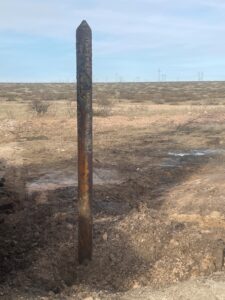The extraction of oil and gas has played a significant role in the development and progress of the United States, providing energy and driving economic growth. However, as we strive for a sustainable future, it is crucial to address the environmental impact of these activities, particularly the plugging and abandonment of oil and gas wells. In this article, we will delve into the importance of proper well closure, the challenges it presents, and the measures being taken to safeguard the environment and future generations.
- The significance of well plugging and abandonment: When an oil or gas well reaches the end of its productive life or becomes uneconomical, plugging and abandonment is a necessary process. Proper closure of these wells is crucial to prevent the release of harmful substances into the environment, protect groundwater resources, and mitigate the risk of accidents, such as blowouts or leaks.
- Challenges associated with well closure: a. Cost implications: Plugging and abandoning wells can be an expensive undertaking for oil and gas companies. The costs involve regulatory compliance, site restoration, and monitoring activities. Striking a balance between financial feasibility and environmental responsibility is a challenge that companies must address.
b. Regulatory framework: Federal and state regulations govern well plugging and abandonment to ensure safe and responsible practices. Ho

wever, the complexity and diversity of these regulations across different states pose challenges for companies operating in multiple jurisdictions.
c. Orphaned wells: Orphaned wells, which no longer have an accountable owner, pose a significant challenge. These wells can become environmental liabilities if left unplugged, potentially contaminating water sources and emitting greenhouse gases. Addressing orphaned wells requires cooperation between industry, regulators, and government agencies.
- Mitigating environmental risks: a. Cementing and sealing: The primary objective of well plugging is to create an impermeable barrier using cement and other sealing materials to prevent the migration of fluids and gases. Proper cementing techniques and well design are essential to ensure the integrity of the well closure.
b. Site restoration: Once a well is plugged, site restoration activities focus on reclaiming the land, removing surface infrastructure, and restoring the natural landscape. This helps to mitigate the visual impact and potential habitat disruption caused by drilling operations.
c. Monitoring and remediation: Post-closure monitoring is crucial to detect any potential leaks or environmental concerns. Regular inspections and maintenance of plugged wells can ensure the ongoing integrity of the closure, allowing for early identification and remediation of any issues that may arise.
- Collaborative efforts and innovations: a. Partnerships: Collaboration between industry, government agencies, and environmental organizations is crucial for effective well closure. Partnerships can enhance knowledge sharing, funding opportunities, and technical expertise, leading to more efficient and environmentally sound practices.
b. Technological advancements: Advancements in well plugging techniques, such as improved cement formulations and downhole tools, contribute to enhanced well integrity and longevity. Additionally, innovations in well decommissioning and site restoration methods can streamline the closure process, reducing costs and environmental impact.
The plugging and abandonment of oil and gas wells in the United States are critical steps toward safeguarding the environment and future generations. Through responsible closure practices, including proper cementing, site restoration, and ongoing monitoring, the risks of environmental contamination and accidents can be minimized. Collaborative efforts and technological advancements will continue to drive improvements in well closure practices, ensuring a more sustainable energy industry and protecting our natural resources for years to come.
